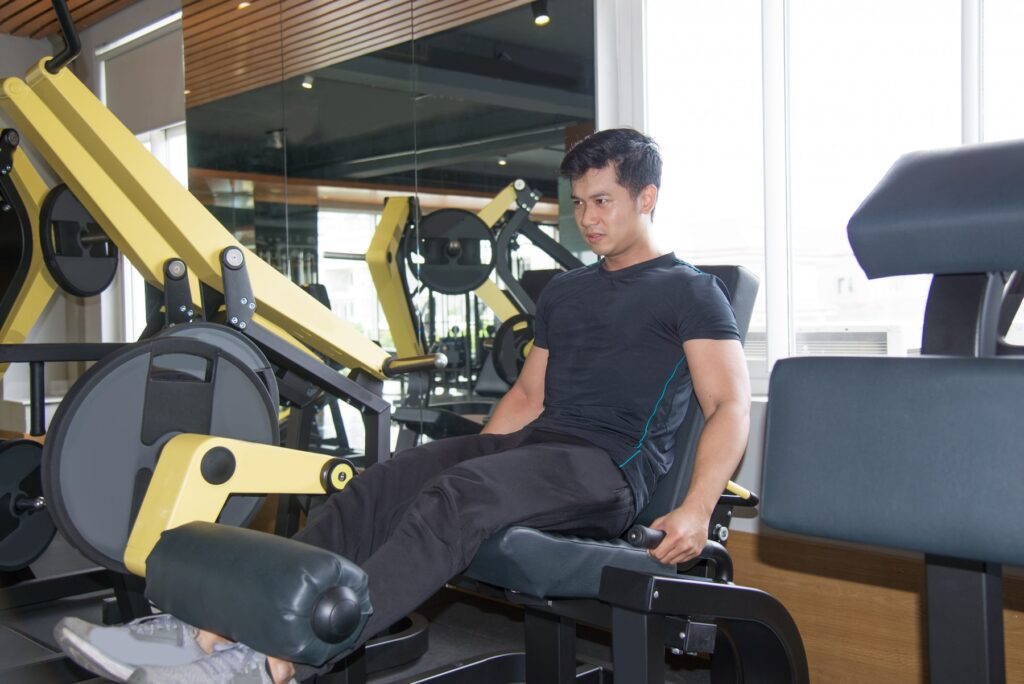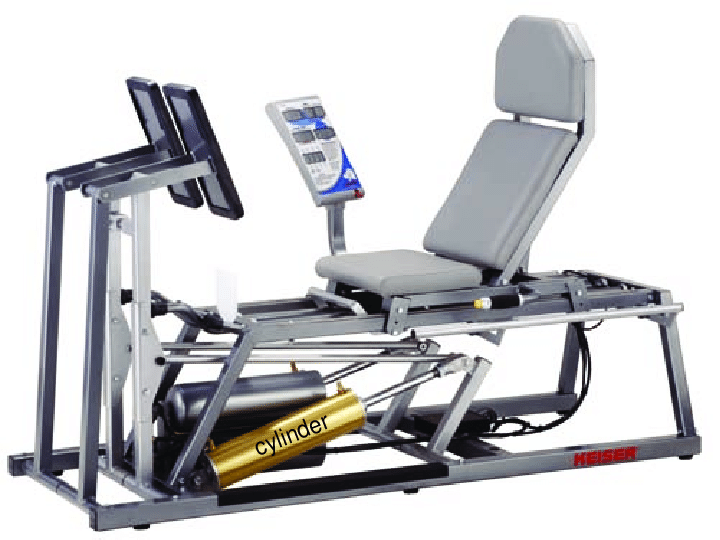There are several different modes of resistance exercise that can be used in weight-lifting exercises. These include free weights, machines, bodyweight exercises, and elastic resistance (e.g., bands or cables). Each mode has advantages and disadvantages when it comes to biomechanics, so it is important to understand how they differ in terms of torque, movement patterns, muscle activation, and energy expenditure.
Free Weights
In free weight exercises, the load is suspended from an anchor point and moves freely through a variety of different motions. For example, when doing a bicep curl with free weights, the load is suspended by your arms rather than locked into a fixed position like it would be on a machine. Free weight exercises tend to use more muscle groups throughout the body and require greater balance and stability than machine-based exercises. However, they are also less accurate due to human error in controlling the movement trajectory of the weight.
Free weight exercises are performed with barbells, dumbbells, and similar equipment.
Applying the first law of motion, we see that the force required to move an object is equal to its mass times its acceleration. When it comes to free weights, the acceleration is generated by the muscles contracting. The amount of force that a muscle can generate depends on several factors, including muscle size, firing rate, and contraction type (e.g., isometric vs. concentric) (Knudson 2007).
Now in vertical movements, additional force is required to overcome gravity. The amount of force required to overcome gravity is equal to the mass of the object times the acceleration due to gravity (9.8 m/s2).
In order for a muscle to generate enough force to move a free weight, it must first overcome the force of gravity. For example, in order to curl a 10 kg dumbbell, your bicep muscles must generate at least 98 N of force (10 kg x 9.8 m/s2). But since muscles can only generate a certain amount of force, this means that free weights are typically lifted slower than objects on machines. In horizontal movements, the force required does not require overcoming gravity.
Ideally, vertical movements are more effective at developing muscle strength than horizontal movements. This is because the force required to overcome gravity is greater in vertical movements, and thus more muscle fibers are recruited.
An incline pushup with weights is an example of both a vertical movement and horizontal movement. When lifting free weights, there are three main types of muscle contractions: isometric, concentric, and eccentric.
In isometric contractions, the muscle length does not change but the force is still generated. For example, holding a weight in your hand in one spot for a certain period of time would be an isometric contraction. These types of contractions generate low levels of force and are typically used to maintain a position or balance.
In concentric contractions, the muscle shortens as it contracts. For example, curling a weight towards your body would be an example of concentric contraction. Unlike isometric contractions, concentric contractions require significant force in order to generate movement.
In eccentric contractions, the muscle lengthens as it contracts. These types of contractions also require high levels of force and are typically used to decelerate a weight after lifting it (e.g., lowering a dumbbell back down).

Machine-based Resistance Exercises
Machine-based resistance exercises are performed on devices that provide a fixed trajectory of movements, such as weight machines, pulley systems, and cables. Unlike free weights, these machines typically distribute the load throughout a set of joints to ensure correct alignment and reduce the risk of injury.
In machine-based resistance exercises like bicep curls, the workload is applied directly to the muscle group being targeted, as opposed to free weights where much of the force must be generated by stabilizing muscles. Additionally, machines are typically easier and more comfortable to use since they guide your body through the range of motion.
While machine-based resistance exercises have many benefits, they also have some drawbacks compared to free weight exercises. For example, because the movements are guided by a machine, there may be more variability in how accurately the desired trajectory is followed (McCaw and Friday 1994). This means that the level of accuracy and control in a machine-based exercise may be less than what you would get from a free weight exercise.
Gravity-based machines like a Smith machine and cable pulleys are often more effective at engaging stabilizing muscle groups that free weights and can provide a good workout for the target muscles. These machines provide the gravity-based resistance needed to generate muscle force, while also allowing for a more controlled movement.
The resistance provided by weight machines is typically lower than that of free weights, meaning that the muscles do not have to work as hard. As a result, machine-based exercises may not be as effective at building muscle strength as free weight exercises.

Pneumatic Resistance Exercises
Pneumatic resistance exercises use large inflatable tubes called pneumatic cylinders to provide resistance. These cylinders are typically connected to a belt that wraps around the user’s body and can be adjusted in length depending on their size.
Compared to weight-based machines, pneumatic resistance tubes allow for greater mobility and range of motion since the tubes do not restrict movement as weight machines do. Additionally, pneumatic resistance offers more control over how much force is applied during an exercise since you can adjust the tube size as needed.
However, because these cylinders are filled with air, they also offer less resistance than weights or other devices that directly apply load to your muscles (Frost, Cronin, and Newton 2010). This means that pneumatic resistance may not be as effective at building muscle strength or endurance as other forms of resistance.
However, it accounts for tackling limitations of having no inertia due to mass, as well as, the fact that when compressed, air generates less force than other fluids like water. This allows for a wide range of resistance suitable for different exercises and repetitions, as well as, a smooth transition in resistance while performing an exercise.
Hydraulic Resistance Exercises
Hydraulic resistance exercises use fluid-filled cylinders to provide resistance. These cylinders contain a piston that moves up and down within the cylinder as you perform your exercise, which then applies pressure to the fluid and provides resistance.
One of the major benefits of hydraulic resistance is that it can be easily adjusted with a simple turn of a knob or lever. This means that these types of exercises are ideal for creating custom workouts based on variables such as workout intensity and repetitions.
However, because the amount of force applied by hydraulic resistance depends on how much volume of fluid is in the cylinder, there may be less control over how much force is applied during an exercise compared to other forms of resistance. Additionally, since only a small portion of the total volume of fluid is actually in use during an exercise, there may also be less overall resistance than other forms of resistance.

Elastic Resistance Exercises
Elastic resistance exercises use rubber bands or tubing to provide resistance. These bands can be made of latex, Thera-Band, or other materials, and vary in size depending on their intended use.
The properties of elastic resistance make it ideal for fitness training. First, elastic resistance is adjustable and can provide varying levels of resistance depending on the size of the bands or tubing being used. This means that these types of exercises can be customized to suit individual needs, preferences, and skill levels.
Additionally, elastic resistance allows for a greater range of motion compared to other forms of resistance such as free weights or weight machines. Because the bands or tubing stretch during exercise, they allow you to move through a full range of motion without restriction, which can improve mobility and promote muscle flexibility.
The eccentric load of elastic resistance can also be beneficial for improving strength and coordination. The stretch-shortening cycle that occurs during eccentric loading helps to store energy in the muscles, which can then be used to generate more force during the concentric phase of an exercise (Lopes et al. 2019).
All the types of resistance allow for the wholesome approach depending on the goals and abilities of the person, performance, and health-related.







